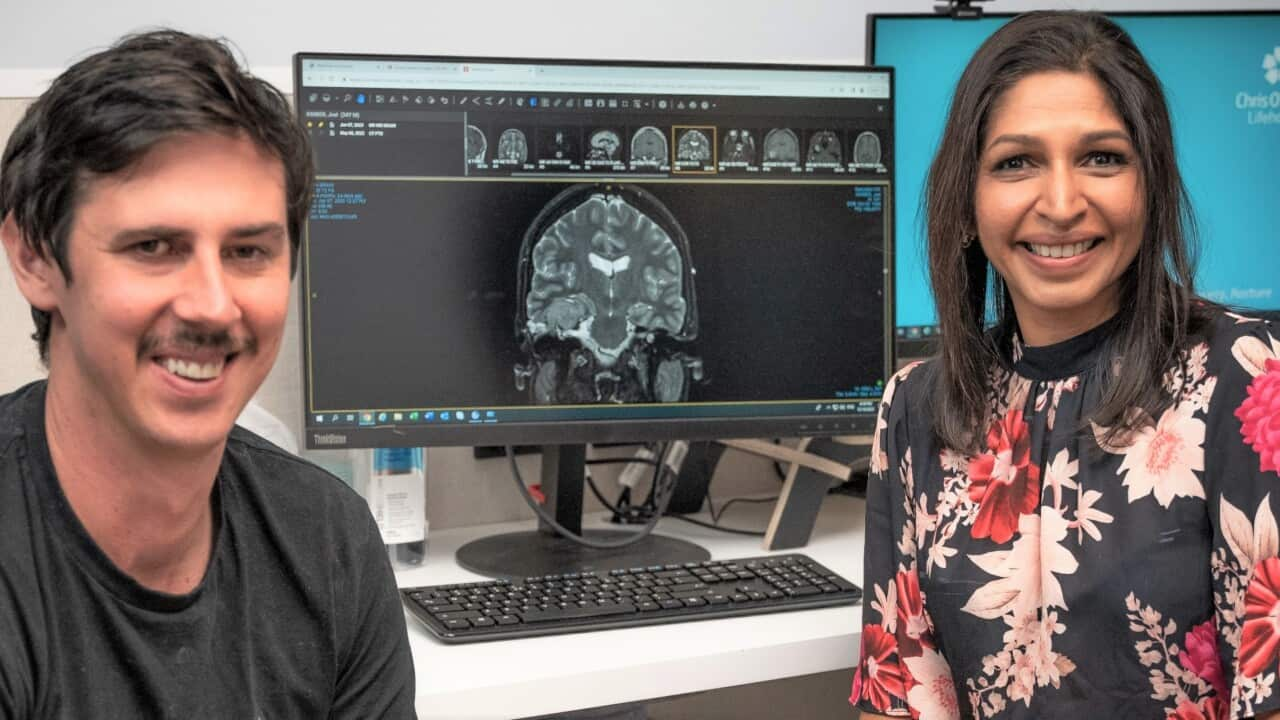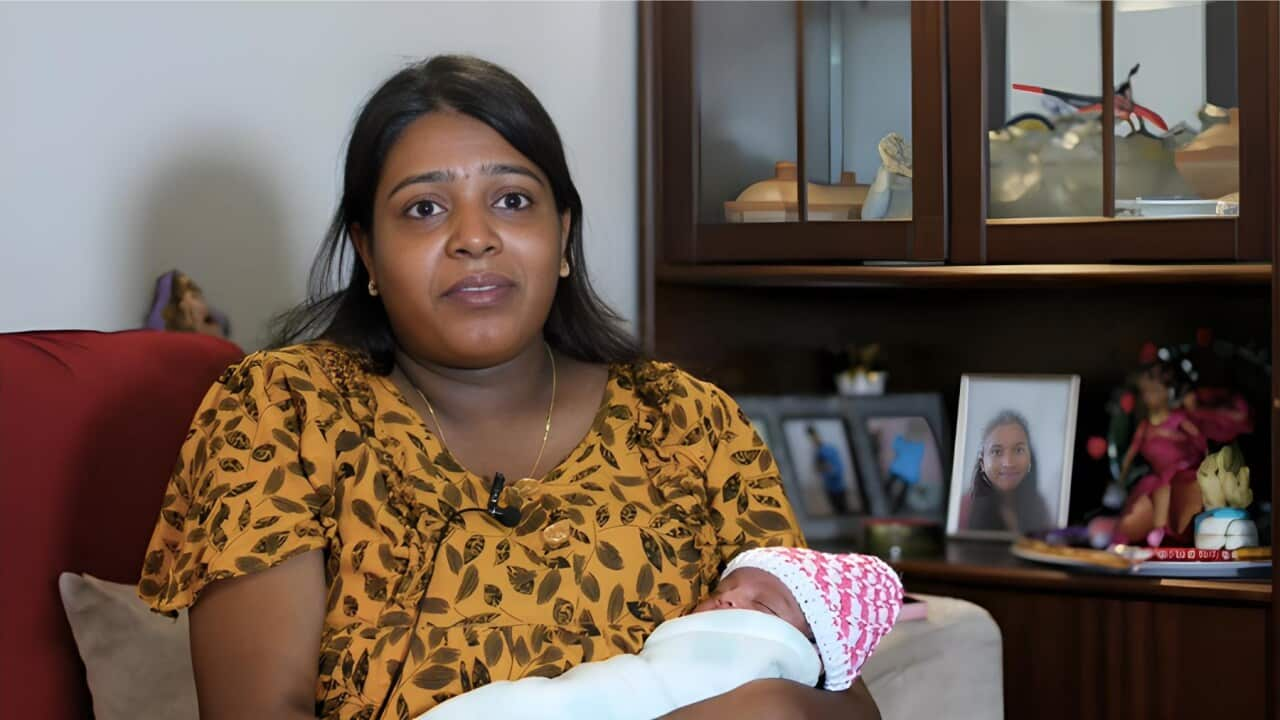TRANSCRIPT
Joel Kimber is 35 years old and a keen basketball player.
He is also among perhaps only 20 people in Australia living with a type of rare brain cancer called a Schwannoma.
"It is a benign tumour on my facial nerve. It affects the muscle control on the right side of my face. My right eye gets really tired because I can't close it properly."
Joel’s condition was diagnosed last year and since then his tumour has grown steadily.
He says it is now the size of a golf ball.
Neurosurgeons advised Joel to have it removed.
"I've actually lost all hearing in my right ear now as a result of the tumour. If left untreated for a long enough period of time, it will eventually take my life."
Doctors detect brain cancer in around 16-hundred people in Australia each year.
For Joel, the diagnosis came as a shock.
"I remember getting an email and it said from ‘brain surgeon’ and it's just such a wild thing to have and it's like we need to chat to you. And it was a really difficult time, like a really, really difficult time. I didn't know what was going to happen. I didn't know ... like … I had all those thoughts. Do I only have three months to live? What does the rest of my life look like?"
Joel is under the care of specialists at Sydney’s Chris O’Brien Lifehouse, a not-for-profit integrated cancer treatment centre.
"I really love the fact of how patient focussed it is. It's made me tackle this really difficult time in my life with a lot more ease, grace."
Last week, a team including Director of Neurosurgery Dr Brindha Shivalingham removed the tumour in a complex 9-hour operation.
"We have to go through the skull at the base of the brain in order to get to the tumour. And in that location, there are many important nerves and also blood vessels that need to be looked after and preserved."
Post-surgery Joel needs to be able to blink his eye and swallow properly.
Dr Shivalingham explains that innovative techniques were used to help him regain facial function.
"Because it involves the facial nerve and we know that during the operation to remove the tumour, we need to sacrifice his facial nerve. And, one of the things that we do here at Chris O’Brien Lifehouse is something called re-animation Surgery, where we join facial nerves to other nerves in order to reactivate the muscles of his face so that he can keep using them or has movement in them."
Dr Shivalingham is proud to be saving lives at the Chris O’Brien Lifehouse, and says it has helped to heal her own wounds.
She is still haunted by childhood memories of fleeing the family home during a violent uprising in Sri Lanka.
"We escaped the mobs who were out to kill us basically. So, it was a harrowing experience, still stirs up a lot of emotion for me. It started in 1983 when the civil war was in Colombo, and our entire neighbourhood was wiped out within a few hours. So, all of our houses got burnt down whilst we were in it, and we had to flee basically and ended up in a refugee camp."
Dr Shivalingham grew up in Sydney, and later studied medicine in Australia and the UK.
For the past 6 years she has worked at the cancer centre as a neurosurgeon.
"One of the things that I really wanted to achieve when I came on board at Chris O'Brien Lifehouse is to establish a place, a centre of excellence for brain cancer where patients feel completely and utterly looked after. And that is actually the proudest thing that I have achieved."
Over the past decade, the Lifehouse has treated more than half a million patients, fulfilling Dr Chris O’Brien’s vision for a patient-centred cancer facility.
"Chris O'Brien was a head and neck cancer surgeon. And I was the first person to have to tell him that he had brain cancer. It was a very, very tough part of my job. It was incredibly difficult to break that news to him. He was a cancer specialist himself and he knew exactly what this meant for him, but he certainly fought it hard. He fought it very hard."
Dr Chris O’Brien died in 2009 but his vision lives on.
Joel is among 60, 000 cancer patients treated there, this year.
He is making a good recovery, while helping staff to celebrate 10 successful years.
Professor Jeremy Crook explains.
"Chris O’Brien Lifehouse has made a major contribution not just to patient care but also to cancer research both at national and international level."
Even so, Dr Shivalingham says with 50-thousand cancer deaths each year in Australia, more support is needed.
"We are still losing too many people to brain cancer, and this is something that I really want to change in the next 10 years."













